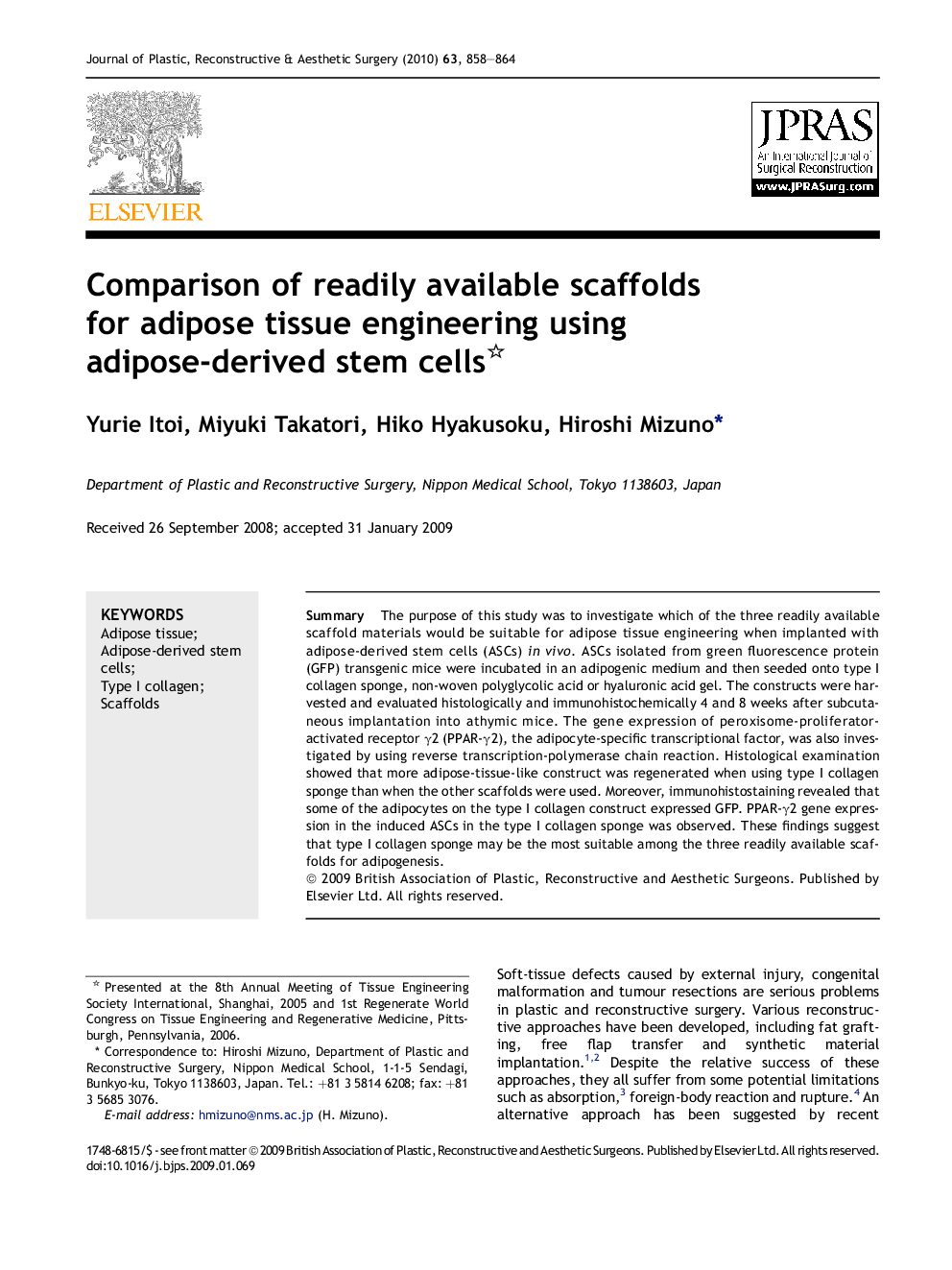| Article ID | Journal | Published Year | Pages | File Type |
|---|---|---|---|---|
| 4119530 | Journal of Plastic, Reconstructive & Aesthetic Surgery | 2010 | 7 Pages |
SummaryThe purpose of this study was to investigate which of the three readily available scaffold materials would be suitable for adipose tissue engineering when implanted with adipose-derived stem cells (ASCs) in vivo. ASCs isolated from green fluorescence protein (GFP) transgenic mice were incubated in an adipogenic medium and then seeded onto type I collagen sponge, non-woven polyglycolic acid or hyaluronic acid gel. The constructs were harvested and evaluated histologically and immunohistochemically 4 and 8 weeks after subcutaneous implantation into athymic mice. The gene expression of peroxisome-proliferator-activated receptor γ2 (PPAR-γ2), the adipocyte-specific transcriptional factor, was also investigated by using reverse transcription-polymerase chain reaction. Histological examination showed that more adipose-tissue-like construct was regenerated when using type I collagen sponge than when the other scaffolds were used. Moreover, immunohistostaining revealed that some of the adipocytes on the type I collagen construct expressed GFP. PPAR-γ2 gene expression in the induced ASCs in the type I collagen sponge was observed. These findings suggest that type I collagen sponge may be the most suitable among the three readily available scaffolds for adipogenesis.
